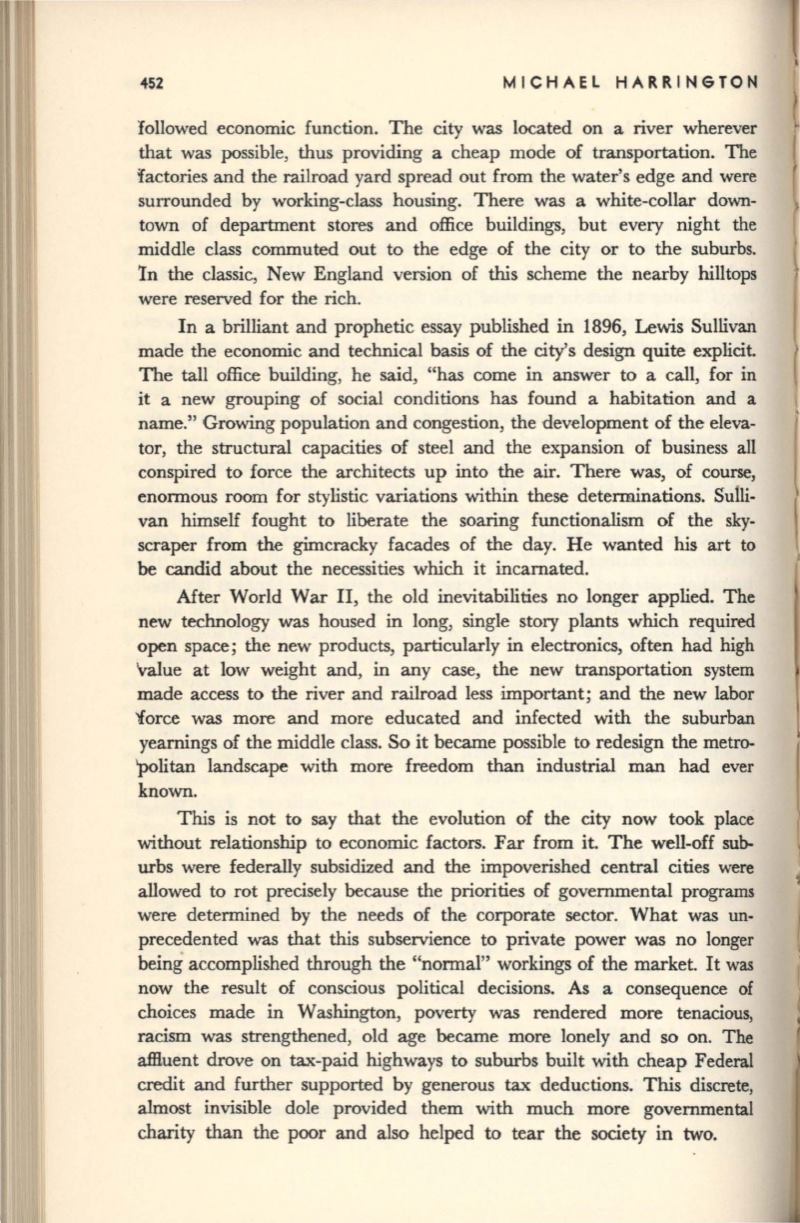
-452
MICHAEL HARRIN6TON
followed economic function. The city was located on a river wherever
that was possible, thus providing a cheap mode of transportation. The
factories and the railroad yard spread out from the water's edge and were
surrounded by working-class housing. There was a white-collar down–
town of department stores and office buildings, but every night the
middle class commuted out to the edge of the city or to the suburbs.
Tn the classic, New England version of this scheme the nearby hilltops
were reserved for the rich.
In a brilliant and prophetic essay published in 1896, Lewis Sullivan
made the economic and technical basis of the city's design quite explicit.
The tall office building, he said, "has come in answer to a call, for in
it a new grouping of social conditions has found a habitation and a
name." Growing population and congestion, the development of the eleva–
tor, the structural capacities of steel and the expansion of business all
conspired to force the architects up into the air. There was, of course,
enormous room for stylistic variations within these determinations. SulIi–
van himself fought to liberate the soaring functionalism of the sky–
scraper from -the gimcracky facades of the day. He wanted his art to
be candid about the necessities which it incarnated.
After World War II, the old inevitabilities no longer applied. The
new technology was housed in long, single story plants which required
open space; the new products, particularly in electronics, often had high
'value at low weight and, in any case, the new transportation system
made access to the river and railroad less -important; and the new labor
'force was more and more educated and infected with the suburban
yearnings of the middle class. So it became possible to redesign the metro–
politan landscape with more freedom than industrial man had ever
known.
This is not to say that the evolution of the city now took place
without relationship to economic factors. Far from it. The well-off sub–
urbs were federally subsidized and the impoverished central cities were
allowed to rot precisely because the priorities of governmental programs
were determined by the needs of the corporate sector. What was un–
precedented was that this subservience to private power was no longer
being accomplished through the "normal" workings of the market. It was
now the result of conscious political decisions. As a consequence of
choices made in Washington, poverty was rendered more tenacious,
racism was strengthened, old age became more lonely and so on. The
affiuent drove on tax-paid highways to suburbs built with cheap Federal
credit and further supported by generous
tax
deductions. This discrete,
almost invisible dole provided them with much more governmental
charity than the poor and also helped to tear the society in two.


